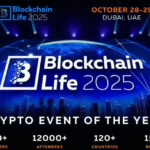Over the past few years, decentralized finance (DeFi) and Web3 trading have seen massive growth, especially among individual users. From trading tokens to staking and yield farming, retail and institutional investors have jumped into these new markets with excitement.
But while everyday users are embracing this new world, big financial institutions are still standing on the sidelines. Their involvement has been slow, cautious, and scattered. You don’t see major banks or asset managers going all-in on DeFi infrastructure and platforms, at least not yet.
So, what’s the holdup? If the technology is so promising, why are the big players still hesitant to dive in? This article breaks down the key reasons behind that hesitation and why the gap between retail and institutional participation in Web3 remains so wide.
The Promise of Web3 Trading
Web3 trading offers a bold new vision for how global finance could work, faster, fairer, and more open to everyone.
The Promise of Web3 Trading
- 24/7 borderless markets
- Permissionless innovation and access
- Reduced reliance on middlemen, enabling direct execution
- Transparency and composability advantages over traditional finance
- The vision: hedge funds, asset managers, and banks interacting on-chain
24/7 Borderless Markets
Traditional stock markets are tied to geography and time. For example, the New York Stock Exchange runs on U.S. business hours and shuts down on weekends and holidays. In contrast, Web3 markets operate non-stop.
Whether you’re in London at midnight or in Nairobi on a Sunday morning, you can access the same global trading opportunities as anyone else. This model gives retail and institutional investors more freedom and flexibility than ever before.
Permissionless Innovation and Access
In the traditional world, launching a new financial product often means dealing with paperwork, regulatory approvals, and closed-door decisions. Web3 flips that model. Developers can create and launch new tools without asking for permission.
This encourages experimentation and fast progress. It also means anyone can access these tools with just a wallet and an internet connection.
Reduced Reliance on Middlemen, Enabling Direct Execution
In today’s financial system, many layers sit between you and your money: brokers, banks, clearing houses, and custodians. These middlemen add time, fees, and risk. Web3 removes most of them.
Thanks to smart contracts, users can trade, lend, or borrow directly on-chain, without needing to trust a third party. That means faster transactions, fewer errors, and more user control.
Transparency and Composability Advantages Over Traditional Finance
One of the most powerful things about Web3 is its transparency. Every transaction is recorded on a public ledger for anyone to verify.
On top of that, Web3 platforms are composable, meaning they can plug into each other like LEGO blocks. Developers can mix and match different protocols to build custom financial tools, saving time and making the system more flexible.
The Vision: Hedge Funds, Asset Managers, and Banks Interacting On-Chain
The big dream is a future where major financial players aren’t just watching Web3 from a distance, they’re using it. Imagine hedge funds managing portfolios through DeFi protocols, banks offering on-chain lending, or asset managers trading real-world assets as tokenized securities on public blockchains.
It’s not just about technology; it’s about changing how finance works at its core, with more efficiency, more inclusion, and fewer walls between the people and the markets.
What Institutions Need: Privacy, Security, and Scale
For big financial players to seriously enter Web3 trading, the infrastructure must meet their high standards for privacy, safety, and performance.
Privacy: Institutions Can’t Broadcast Trades on Public Blockchains
In Web3, most transactions happen in the open. That might work for individual users, but for large institutions, it’s a problem. Hedge funds and banks don’t want the world to see their trading strategies, portfolio moves, or how much they’re moving at any given time.
In traditional markets, trades are private until they need to be reported. Public blockchains flip that upside down; everything is visible immediately. Without privacy tools or private layers, institutions risk giving away their edge.
Security: Custodial Concerns, Rug Pulls, Smart Contract Exploits
Big institutions are responsible for managing billions of dollars, sometimes on behalf of clients. They can’t afford to risk losing funds to a “rug pull,” where a project vanishes overnight, or to a smart contract bug that lets hackers drain money.
Unlike retail users who may take higher risks, institutions need guarantees. They need secure custody solutions, smart contract audits, and a way to recover funds if something goes wrong. The current landscape still feels too risky for many of them.
Scale: Ability to Deploy Large Capital Without Moving Markets or Incurring Major Slippage
Institutions trade in size. Putting $5 million or $50 million into a market should not cause major price swings, but in many DeFi platforms today, it does.
Liquidity is often shallow, and large orders can cause serious slippage, where you end up paying more or getting less than expected. Until DeFi infrastructure can support deeper liquidity and better order execution, many institutions will stay cautious.
Regulatory Clarity: Assurance That Compliance Requirements Can Be Met
Regulation is a big deal for institutions. They have to follow strict rules about customer protection, anti-money laundering (AML), and risk management. But the rules for DeFi and Web3 are still unclear in many parts of the world.
Without clear legal guidance, compliance officers at banks and funds are likely to say “no” to DeFi participation. They need to know that using Web3 platforms won’t get them into legal trouble or create gaps in their reporting obligations.
What’s Missing in Current DEX/DeFi Tools
Despite all the progress, today’s decentralized trading tools still fall short in key areas that institutions care about most.
What’s Missing in Current DEX/DeFi Tools
- Weak compliance frameworks: KYC/AML integration, transaction monitoring
- User Experience gaps: Complex interfaces, poor customer support, slow transaction finality
- Fragmentation across chains and protocols
- Liquidity issues and slippage for large orders
Weak Compliance Frameworks: KYC/AML Integration and Transaction Monitoring
Traditional finance lives and breathes compliance. Banks and asset managers are legally required to verify who they’re dealing with (KYC) and prevent money laundering (AML).
Most DeFi infrastructure and platforms were built to be open and anonymous, which makes meeting these rules very difficult. Right now, very few decentralized tools offer built-in KYC/AML features or real-time transaction monitoring, tools that institutions absolutely need to stay on the right side of the law.
User Experience Gaps: Complex Interfaces, Poor Customer Support, Slow Transaction Finality
Even experienced retail users sometimes find DeFi infrastructure and interfaces confusing. Wallet setups, gas fees, and bridging between chains can be a hassle. Now imagine asking a busy institutional trader to figure it out.
On top of that, most DeFi platforms don’t have real-time customer support or dedicated help desks. And transaction finality, knowing a trade is fully confirmed, can take longer than what traditional systems allow. These experience gaps slow adoption and increase the risk of user error.
Fragmentation Across Chains and Protocols
Web3 is made up of many different blockchains and protocols, and they don’t always work well together. Trading on Ethereum is different from trading on Solana or Avalanche.
Assets and tools don’t move smoothly across platforms, and bridging between chains can be slow, expensive, or risky. For institutions that want to move quickly and operate at scale, this kind of fragmentation creates too much complexity.
Liquidity Issues and Slippage for Large Orders
Institutional investors often trade in large volumes, but many DeFi platforms just don’t have the liquidity to handle big orders smoothly. If an institution tries to buy or sell millions in a single trade, it can move the market price sharply, causing slippage and poor execution.
Without deeper liquidity pools and more advanced trade execution tools, these platforms can’t yet compete with the efficiency of traditional markets.
Ongoing Efforts to Close the Gap
Some projects are now designing DeFi platforms specifically for institutional use. For example, Aave Arc is a permissioned version of Aave that allows only verified institutions to lend and borrow in a controlled environment.
Chainlink’s CCIP (Cross-Chain Interoperability Protocol) is working to securely move data and assets across chains, which is what institutions need for smoother operations.
Zero-Knowledge Tech for Private Transactions
Zero-knowledge (ZK) technology is one of the most promising tools for privacy in Web3. It allows transactions to be verified without revealing the details of the transaction itself.
For institutions, this means they could prove that a trade followed the rules without revealing sensitive data like trade size or strategy. These private layers are essential if financial institutions are going to trust blockchain technology with large-scale activity.
Compliance-Friendly Middleware
To help institutions meet legal requirements, new tools are being developed to fit between traditional compliance systems and blockchain protocols. For example, zk-KYC lets users prove their identity meets regulatory standards without revealing all their personal details.
Other tools are being built to create privacy-preserving audit trails, enabling firms to stay compliant without revealing sensitive client data.
Custody Improvements
Secure storage of crypto assets is a top concern for institutions. New custody solutions are being designed to meet that need. Multi-party computation (MPC) wallets split control of private keys among multiple parties, making theft or loss less likely. Platforms like Fireblocks offer enterprise-grade custody with advanced security and controls.
UX Upgrades Focused on Abstracting Web3 Complexity
A big barrier to entry is how complex Web3 tools can feel. To fix that, developers are working on better user experiences. Account abstraction allows users to interact with a blockchain without needing to manage complex wallet keys or pay gas fees directly.
Embedded wallets let users trade or invest without even realizing they’re using blockchain tech under the hood. These upgrades make DeFi infrastructure feel more like the apps institutions already use, clean, simple, and safe.
Final Thoughts
Institutional adoption of Web3 trading isn’t a far-fetched idea; it’s just waiting for the right conditions. These players aren’t avoiding DeFi because they don’t see the value; they’re staying cautious because the foundation still has cracks.
To truly close the gap, the Web3 space needs to mature. That means treating it as financial infrastructure, not a playground for experimentation. The same care that goes into designing systems for banks, stock exchanges, or payment processors must now go into DeFi infrastructure and protocols if institutions are going to rely on them at scale.
It’s up to builders to meet institutions halfway. Security, user experience, and regulation should be top priorities. Web3’s future as a serious trading platform depends on trust. And right now, that trust is still being earned, one upgrade at a time.
Disclaimer: This article is intended solely for informational purposes and should not be considered trading or investment advice. Nothing herein should be construed as financial, legal, or tax advice. Trading or investing in cryptocurrencies carries a considerable risk of financial loss. Always conduct due diligence.
If you would like to read more articles like this, visit DeFi Planet and follow us on Twitter, LinkedIn, Facebook, Instagram, and CoinMarketCap Community.
Take control of your crypto portfolio with MARKETS PRO, DeFi Planet’s suite of analytics tools.”




















